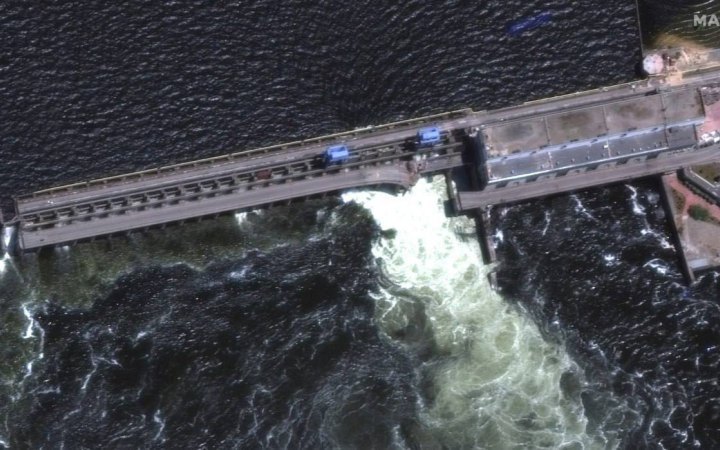The water level in the Kakhovka reservoir continues to drop, the press service of Ukrhydroenergo has reported.
As of 10:00 a.m. on 7 June, the water level near Nikopol was 14.41 metres. The water level in the Kakhovka reservoir decreased by almost 2.5 metres over the day. The destruction of the spillway dam and the earthen insert between the station building and the sluice continues.
"As for the consequences for the region: 1,852 houses were flooded on the right bank of Kherson Region. No emergencies were recorded during the night, the intensity of flooding is decreasing, however, due to significant damages to the dam, water will continue to arrive," the company said.
Currently, 1,457 people have been evacuated, including 1,286 from the Korabel neighbourhood in Kherson.
The flooding of the Bilozerka community began last night. Almost 800 people and more than 170 units of SES equipment are currently involved in response efforts.
"Hazardous chemicals, as well as infectious agents from cemeteries, toilets, and landfills, may end up in wells and open water bodies in the area flooded by the Russians' explosion of the Kakhovka hydroelectric power station," Ukrhydroenergo said.
A decrease in the water level in the reservoir will lead to numerous problems, including with drinking water.
On the night of 6 June, the Russian army blew up the Kakhovka hydroelectric power station, which they had mined last year. According to the Ukrainian military, the Russians did this to prevent a Ukrainian counteroffensive. But the explosion would not prevent the Ukrainian army from attacking, said Joint Forces Commander Serhiy Nayev.
Water flooded settlements not only in the government-controlled part of the region, but also on the temporarily occupied left bank. The Ukrainian authorities are evacuating people from Kherson and other localities.








